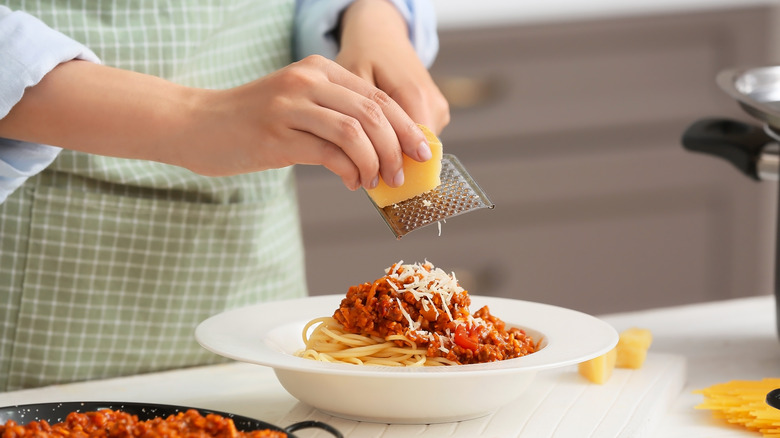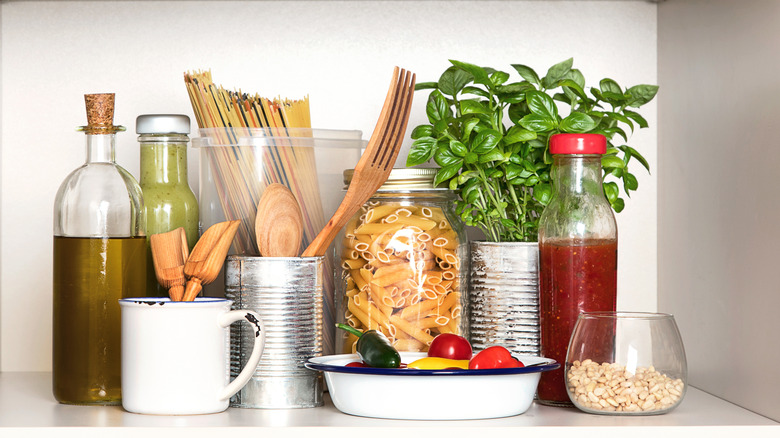How Italian Cuisine Came To Rule '90s American Kitchens
We may receive a commission on purchases made from links.
Italian food is so well integrated into many American kitchens that you might not even consciously register that you're reaching for Italian ingredients when you grab items like sun-dried tomatoes, pesto, salami, radicchio, or, of course, pasta from your pantry or fridge. And if you frequently stir together Italian or Italian-inflected foods at home, you're far from alone: According to a YouGov poll surveying Americans on their favorite cuisine, a whopping 88% of respondents ranked Italian fare as their favorite, a close second to the 91% who preferred their home cuisine.
It might feel like Italian food has been a regular player in home kitchens since forever, but it was really in the '90s that Americans became so enamored of the cuisine that has gifted us culinary treasures such as pizza, pasta, and risotto. According to La Gazzetta Italiana, it was in that decade that Italian ingredients and preparations already familiar to Americans were joined by a whole new influx of imports, including ricotta salata and fontina cheeses; ciabatta and crostini breads; black and white truffles; and balsamic vinegar and extra virgin olive oil.
A classic Italian cookbook published in 1992 might help explain the boom
The Spruce Eats also cites the '90s as a bonafide boom in the American interest in Italian ingredients and techniques, nicknaming the trend "mangia mania." According to the outlet, that might have something to do with the 1992 publication of doyenne of Italian cooking Marcella Hazan's now-classic tome, "Essentials of Classic Italian Cooking." A combined edit of Hazan's '70s and '80s cookbooks "More Classic Italian Cooking" and "The Classic Italian Cookbook," "Essentials" contained recipes for dishes such as homemade orecchiette pasta and a ricotta and coffee dessert (via Amazon), which may have helped fuel an American appetite for new specialty imports.
In addition to the ingredients mentioned above, La Gazzetta Italiana mentions Pecorino Romano and mascarpone cheeses, new styles of pizzas, new pasta shapes, cappuccino, biscotti, and gelato as additional flavors and techniques that flooded American homes and restaurants in the '90s. As the outlet notes, these foods don't always get incorporated into authentic Italian dishes, but more often into Italian-American takes on Old World recipes. But more and more, consumers are seeking out the truly authentic Italian experiences offered by places like Eataly, New York's Italian food and wine mega-market and restaurant, which will no doubt continue to broaden Americans' access to even more Italian flavors such as pasta dyed with squid ink and spicy sardines in olive oil.

